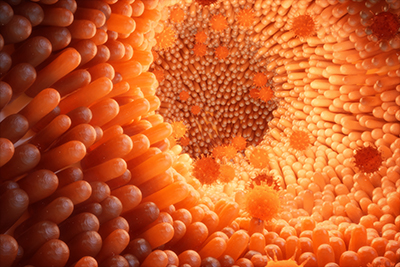By Francisco Rodriguez

The class of signaling molecules known as inositol diphosphates or PP-IPs affects cellular shape, nutrient sensing and many other biological processes among organisms as simple as yeast and as complex as mammals. PP-IP levels—and thus their signaling power—within a cell depend on the activity of kinases, which create PP-IPs by adding a second phosphate group to inositol phosphates, and pyrophosphatases, which destroy PP-IPs by removing a phosphate group.
In a report published recently by PNAS, the group of John York, Natalie Overall Warren Professor of Biochemistry, details their structural and functional analyses of the Vip1 enzyme, which contains both a kinase and a pyrophosphatase portion within the same protein. In this work, the York group shows how the actions of Vip1 help cells change their shape in response to environmental conditions.
The York team found three forms of PP-IP associated with the Vip1 reaction: 1-IP7, 5-IP7 and 1,5-IP8. By comparing the levels of these three PP-IPs in yeast with either the normal Vip1 gene or engineered forms in which either the kinase or the pyrophosphatase portions were inactivated, the researchers determined that the kinase portion generates 1-IP7 and 1,5-IP8, and that the pyrophosphatase portion generates 5-IP7.
The Vip1 enzyme had previously been associated with changes in a cell’s shape and sensing of nutrients; the York team identified the PP-IPs that could steer these processes in different directions. Because the kinase and pyrophosphatase portions of the Vip1 enzyme create and destroy 1-IP7, the cell changes shape according to which of the two Vip1 reactions dominates at a given time, based on the cell’s environment.
The researchers also found that Vip1 enzymatic activity affects the size and number of vacuoles — compartments that store and transport both nutrients and cellular waste — in cells. Using yeast with modified forms of the gene that codes for Vip1, the team found that excess levels of the normal Vip1 enzyme, as well as a form with kinase-only activity, resulted in fewer, larger vacuoles within experimental cells compared to control cells. In contrast, a full-length mutant of Vip1 in which the kinase portion was inactivated and the pyrophosphatase remained functional was associated with an increased number of vacuoles of smaller size compared to the control. Lastly, a pyrophosphatase-only construct with a dead pyrophosphatase mutation yielded vacuoles of same appearance as the control. The York group attributes differences in vacuole size to the relative abundance of 1-IP7, 5-IP7 and 1,5-IP8 in the cell.
Vip1 appears to be a rare, bifunctional enzyme that contributes both to the formation and the breakdown of the same substances, which allows a cell to adapt its shape in response to nutrient changes in its environment.
This research was supported by the Howard Hughes Medical Institute and the National Institutes of Health